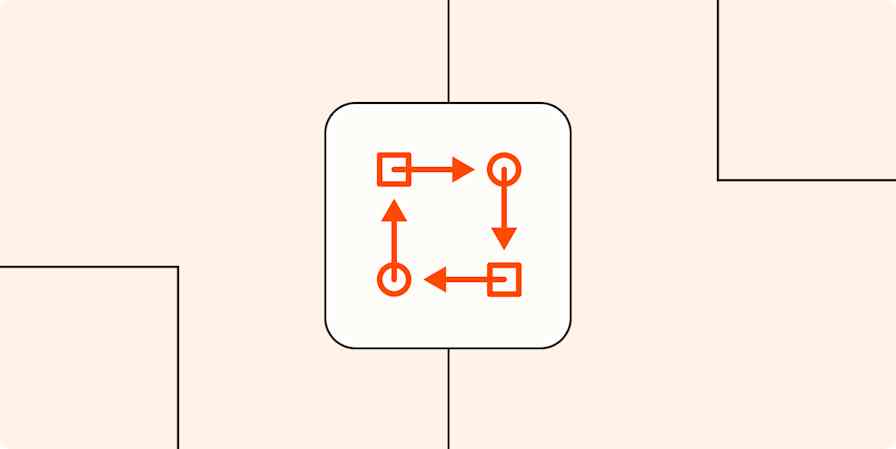Customer reviews are an essential element to the success of your business.
It used to be that a prospective customer would reach out, get on a demo call, chat with the sales team, deliberate a bit, and then decide whether to buy your product or service.
These days, before even thinking about scheduling a call, the same prospect first searches for your business on Google. They'll see your home page and probably find some third-party sites hosting reviews of your business, either customer reviews or reviews they've written themselves. And they'll likely read those reviews first—possibly even making up their mind about you before ever visiting your page.
Chances are if your company has been around for at least a year, some third-party website has automatically created a profile for your product or service and maybe even gotten people to post reviews—reviews you didn't solicit and maybe haven't even seen.
Just Google your company's name and you'll see review sites popping up in Google search results. At JustReachOut we spotted this a while ago:

The problem is, if you aren't maintaining these profiles you could be in trouble because:
information on these websites can be auto-generated and may be woefully out of date
some reviews could come not from your actual customers but rather random people paid to write a review
If you're a local business, you'd be more likely to see things like Google My Business or Yelp reviews here.
Reviews are crucial to the success and growth of your business: the more positive reviews your products and services earn, the more likely it is that future ones will trust you. Here are a few reasons why reviews are important:
About 90% of prospective customers look at reviews before visiting stores
More than half of customers have decided not to purchase after reading about negative customer service experiences
At JustReachOut, when we decided to focus on improving our reviews, we realized we had to take a step back and evaluate our process, from inbound leads all the way through customer success. At each point, we found places where we could improve—and after implementing these, saw an increase in positive reviews. Here's what we did:
Better managed inbound contacts
Automated onboarding for streamlined service
Invited reviews from our most satisfied customers
Actively tracked reviews
1. Better manage inbound contacts
At JustReachOut, managing sales leads used to be one of our biggest time sinks. Our sales team manually entered information from our "book demo" requests and added it manually to our CRM. After that, they needed to separately follow up with each customer to book a demo.
On average we'd get a booked demo from about 30% of our inbound sales leads, and then about half of those bookings actually showed up to the demo. And we found only 5% of our customers ever left a positive review when we had no automation.
About four years ago we started using Zapier to automate our sales process. After six months of experimentation we achieved the following:
saved an average of 3 hours per day for our team
increased conversion from inbound sales lead to a booked demo to 70%
demo attendance rate increased to 90%
conversion rate from becoming a customer to positive review increased to 15%
Here's what we did to automate our entire sales process.
We have a "book demo" button in the top right corner of our JustReachOut homepage. Clicking it gets interested prospects to a landing page focused on the demo. On our "book demo" landing page, they're asked to enter some personal information—including their first and last name, email address, phone number, and website URL.

This used to be a manual process—and a major time blocker for us. A sales rep needed to move the lead's information into HubSpot and create a deal for them, then manually reach out to schedule a call, create a task in Todoist with all the details, and create a calendar event.
Now we automate this with Zapier. Once the customer has filled out the contact form shown above, we use a Zap that sends information from the WordPress form into HubSpot, where it creates a contact and a deal.
Our Zap starts from a webhook, runs through Formatter, and then has two HubSpot actions, one to create a contact and the other to create a deal. Here are some starting points you could use:
Create or update HubSpot contacts for new Webhooks
Our Zap includes information that will help the sales rep evaluate and match the needs of the customer, like what their budget is, who internally they have to support their public relations efforts, and when they want to begin improving their PR work.
Zapier creates the HubSpot contact and the HubSpot deal. It also assigns the lead to a specific sales rep on our team. At this point, the sales rep gets an email about their new lead with all the relevant details from their form submission automatically populated into Hubspot. The sales rep will then follow up with the customer and qualify them. If they are qualified by our sales team they then get a link to book a call.
The next Zap in our system takes the call event appearing in Google Calendar as the trigger, then schedules a Google Meet call, emails the customer and sales rep, and creates a task in Todoist for the sales rep.
The last step in our automated system reaches out to the customer 30 minutes before the call, reminding them of the appointment. This Zap triggers off of the event start time and includes an action that sends a message through Salesmsg. This has increased the chance of the customer showing up to the demo call from 50% to 90%.
The message is pretty straightforward: "<First name>, are we still on for the call in 30 minutes?" It's sent to the phone number they entered on the demo landing page.
And boom—they're almost twice as likely to show up for the call.
This is the Zap we use:
Get SMS alerts via Salesmsg before Google Calendar events begin
The JustReachOut team recommends template SMS messages, like these recommended on the Salesmsg blog.
2. Automate onboarding for streamlined service
Our automated onboarding process at JustReachOut is very straightforward—but it works like a charm! In fact, it increased our conversion rate from trials to paid plans by 40%.
All of our plans can be tested with a basic 14-day free trial.
During this time, we need to make sure our prospective customers stay engaged, so that they are more likely to convert. We use a Zap to help automate this onboarding phase.
When someone signs up for a trial we use a Stripe to Convertkit Zap that starts when we have a new customer in Stripe. From then on, Zapier helps us keep the customer engaged.
The Zap takes the customer's name and email from Stripe and drops them into ConvertKit, where they are subscribed to a drip email campaign. These emails provide information, tips, and encouragement. They make sure the customer feels welcomed and supported. And we can see how effective this approach is by the uptick in our conversion rates.

3. Invite reviews from satisfied customers
Here's what you've been waiting for. With your sales and onboarding process automated and customers as happy as can be, it's time to focus on feedback by automating when and how you ask your customers for ratings and reviews.
One of the simplest and easiest ways to ask customers for reviews is to email out a customer satisfaction (CSAT) survey. You have probably seen these in your inbox before. They usually ask a single question, like "How satisfied were you with our service?" and then include a numeric scale from which to choose a rating—often from best to worst or on a happiness scale.
The trick is to ask for this feedback at precisely the right time and with as little friction as possible.
Our customer support team used to call customers on the phone to try resolving software issues over a phone call. We sent our CSAT emails immediately after the call asking the customer to rate how we did and leave a positive review. On average, we received one positive review for every 10 support phone calls.
Our reasoning was: we took extra time to have a phone call with them, so they must to be more satisfied with our service, let's ask them for a positive review!
But our response rate showed our reasoning was faulty. When we looked into it more, we realized our mistake: according to research done by Help Scout, customers are about twice as likely to be satisfied with live chat support than phone support.
Adding to our trouble was our system of sending CSAT emails every two weeks on Monday mornings. These went to all customers, including those who just got a CSAT email because they'd had a call with us. Our response rate was low—10% at best—and we got three negative scores for every positive one.
We weren't tailoring our ask: we didn't know if the customers we surveyed had engaged with our product recently or had a positive experience and that showed in our low engagement and scores. If we wanted this to improve, we needed to change how we asked for reviews, getting better about who we asked and when we made the request. A friend of mine used to get these emails asking for a review all the time from BarkBox, and they came at precisely the right time: exactly 30 minutes after he placed an order, he'd get an email like this:

The timing was perfect. My friend was obviously satisfied and very happy with their product, since he had just placed another order, making it more likely that he would give positive feedback. At JustReachOut we decided to take this approach, and only ask for a review when we knew a customer we had worked with over live chat or email was satisfied with the outcome of their support request.
Our shift to providing support over email and chat also improved our data tracking, reducing the manual work required to log contacts in our CRM. The new ticketing systems made it easy to identify when tickets were resolved and whether the customer was satisfied—and this made it possible for us to automate our review request system.
Our new process was simple:
Customer service reps continued to provide support to all our customers.
One rep scanned all the tickets each day, looking for big issues that were successfully resolved. Then, that rep would add the tag "review" to those tickets.
That tag started a Zap that sent out an automated request for a review.
Automating our review collection process triple our rate of positive reviews: we went from 5% of customers leaving a positive review (without automation) to 15% of customers leaving a positive review (with automation).
We targeted our review requests to the customers we knew we'd helped and asked for that feedback shortly after their positive interaction with our team.
Create Trustpilot invitations from updated Help Scout tags
If support tickets aren't part of your workflow, another popular time to ask for a review is after a repeat purchase or renewal.
Here are just a few more ways to automate asking customers to review requests after purchases:
Create Trustpilot invitations from new WooCommerce orders
Create new ReviewPoint contact from a new Square customer
Send feedback requests from GatherUp for new QuickBooks Online invoices
4. Actively track reviews
This is another spot where we've switched from a manual process to an automated one. In the past, we used to visit our profiles on G2, Trustpilot, and more, then search to see if any new reviews were posted.
Now, we have Zapier watch for new reviews, and then notify us by email when one comes in.
Read more: Ways to automate customer reviews
Reviews matter: create systems that lead to positive impressions
Positive reviews are essential for your business because they inspire trust in potential customers.
The best way to encourage such reviews is to provide an amazing experience to your existing customers. Automation can help you with that.
By automating elements of processes such as contact management, onboarding new customers, and the actual review collection process and tracking, you'll delight your customers and make it crazy simple and easy for them to leave a positive review for you.
At the end of the day, you'll be left with a wealth of positive reviews to inspire potential customers—and a happy base of existing ones.
This was a guest post from Dmitry Dragilev, founder of TopicRanker.com, an SEO tool which finds keywords your website can easily rank for on Google due to specific problems and weaknesses in search results. Over the last 10 years, Dmitry has helped 300+ brands rank #1 on Google through PR and SEO. Dmitry used PR & SEO to grow a startup from 0 to 40 million views per month, and got acquired by Google in 2014. After the acquisition by Google he translated his know-how into JustReachOut.io, an SEO tool to get covered in press and build authority backlinks without PR firms; it has been used by 5000+ content marketers to date and was acquired in 2021. More about all his projects on his personal blog CriminallyProlific.com. Want to see your work on the Zapier blog? Check out our guidelines and get in touch.
Related reading:









